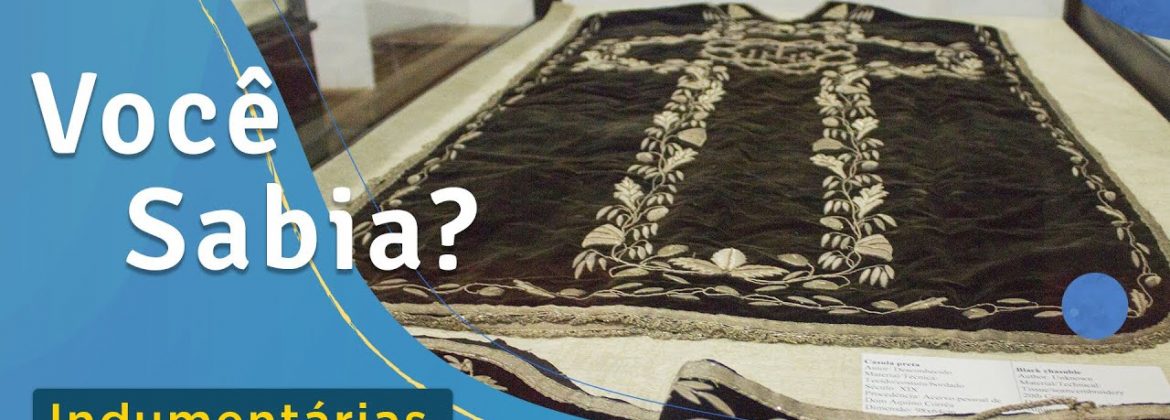Você sabe o que é são indumentária?
Entre os infinitos objetos que estão em museus e que através deles a história pôde ser contada e ilustrada, destacamos aqui as indumentárias. Elas fazem parte do grupo de objetos com que o ser humano é sempre visto, estamos falando das roupas. Os vestuários eclesiásticos, próprios dos Clérigos utilizadas nas celebrações litúrgicas são derivados das vestimentas gregas e romanas.
A batina surge no século IV quando o cristianismo começou a se difundir e muitos religiosos partiram para o deserto. As vestimentas de uso cotidiano acabaram por se diferenciar das de uso litúrgico e apresentam cores e detalhes diferenciados de batinas. O preto é a cor mais comum que vemos nas batinas dos sacerdotes e significa a morte e a renúncia. A cor violácea é para os bispos. A cor vermelha é para os cardeais. A cor branca é para o papa e também é usada em países de missão. É permitido outras cores claras para climas mais tropicais.
A necessidade dos Clérigos usarem um traje próprio vem em razão da sua vocação, chamado, ordenação e que são designados por Deus para levarem o povo adiante dos ensinamentos e dar o sacramento. A exemplo dos policiais e o exército ao se apresentarem para sociedade usam suas fardas próprias, o Clérigo também usa a batina, então, como hábito cotidiano desde o seminário. As batinas devem conter geralmente 33 botões de cima abaixo, representando a idade de Cristo, e cinco botões nos punhos, que representam as cinco chagas de Cristo. Porém, não é obrigatório.
No Museu de Arte Sacra de Mato Grosso temos uma coleção de indumentárias que foram usadas por bispos e papas datadas dos séculos XIX e XX, e hoje iremos falar sobre algumas delas. A primeira é a batina do Bispo Dom Aquino Corrêa que possui 10 botões da altura do ombro até o cotovelo e 43 botões da gola até a barra, com cordonês na cor roxa e corte italiano.
A segunda é a casula usada pelo sacerdote que preside a celebração da missa, é uma veste que simboliza o “Planeta” por sua forma arredondada, que tira o Sacerdote do mundo terreno, para o mundo Espiritual. Em exposição temos duas casulas em estilo românico uma em tecido de veludo preto com bordados feitos em fios prateados. Dentro da coroa está bordada a inscrição JHS (Jesus Hominum Salvator). Ela é vestida pela primeira vez na ordenação presbiteral. A cor preta é usada nas cerimônias de exéquias como Dia de Finados e missa de corpo presente. E a outra de cor dourada bordada com fios de ouro em alto-relevo em toda a sua extensão com elementos fitomorfos, de flores de tipos diversos, como rosa, flor-de-lis, margarida, violeta, lírio d’água, lírio da Páscoa. A cor dourada na veste pode substituir o branco, geralmente usado em dias festivos como Páscoa e Natal.
English Version
Do you know what is religious clothing?
Among the infinite objects that are in museums and that through them the story could be told and illustrated, we highlight the religious clothing. They are part of the group of objects with which the human being is always seen, we are talking about clothes. The ecclesiastical garments, typical of the Clerics used in liturgical celebrations are derived from Greek and Roman garments.
The cassock appeared in the 4th century when Christianity began to spread and many religious people left for the desert. The clothes for everyday use ended up differing from those for liturgical use and have different colors and details of cassocks. Black is the most common color that we see in the robes of priests and means death and resignation. Violet color is for bishops. The color red is for cardinals. The white color is for the pope and is also used in mission countries. Other light colors are allowed for more tropical climates.
The Clerics’ need to wear their own attire comes because of their vocation, calling, ordination and who are appointed by God to take the people ahead of the teachings and give the sacrament. Like the police and the army, when they present themselves to society, they wear their own uniforms, the Cleric also wears the cassock, then, as a daily habit since the seminar. The cassocks should generally contain 33 buttons from top to bottom, representing the age of Christ, and five buttons on the cuffs, representing the five wounds of Christ. However, it is not mandatory.
At the Museum of Sacred Art of Mato Grosso we have a collection of religious clothing that were used by bishops and popes dating from the 19th and 20th centuries, and today we will talk about some of them. The first is Bishop Dom Aquino Corrêa’s cassock, which has 10 buttons from shoulder to elbow and 43 buttons from collar to hem, with purple cordon and Italian cut.
The second is the chasuble used by the priest who presides over the celebration of the Mass, it is a garment that symbolizes the “Planet” for its rounded shape, which takes the Priest from the earthly world, to the Spiritual world. On display we have two chases in Romanesque style, one in black velvet fabric with embroidery made in silver thread. Inside the crown is embroidered the inscription JHS (Jesus Hominum Salvator). She is dressed for the first time in priestly ordination. The black color is used in funeral ceremonies such as All Souls’ Day and body mass present. And the other of golden color embroidered with gold threads in high relief in all its extension with phytomorphic elements, of flowers of different types, such as rose, fleur-de-lis, daisy, violet, water lily, water lily. Easter. The golden color in the garment can replace white, usually used on festive days like Easter and Christmas.

